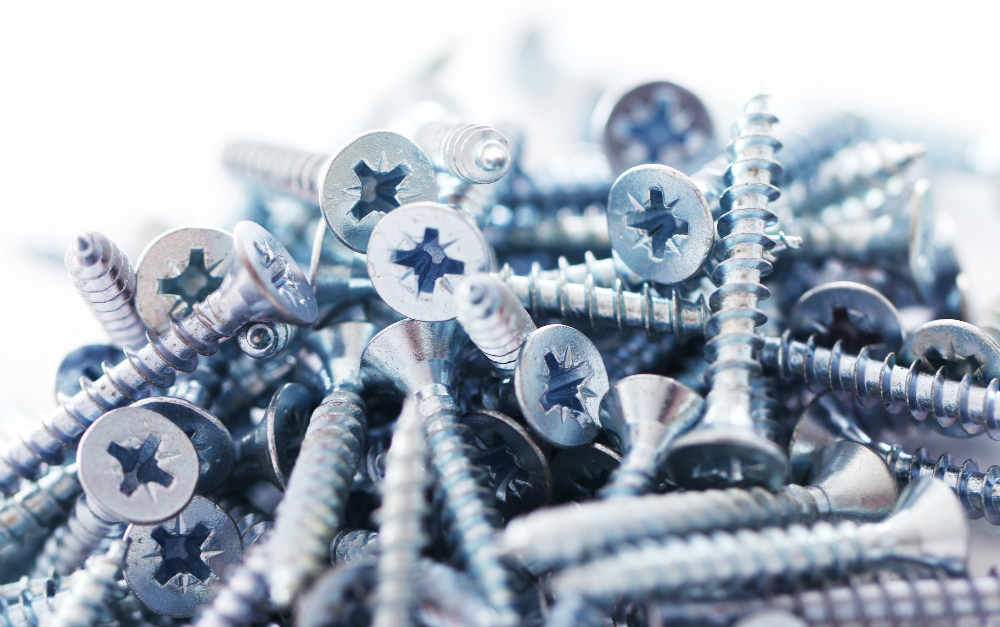Last Updated on June 8, 2024 by Asfa Rasheed
Composite decks are an excellent option for homeowners who want to create a stylish look. With the right fasteners, you can achieve the look you want while creating a long-lasting finish. While wood screws can be used on some surfaces, they won’t do the job as well as composite deck screws do. These screws have a reverse thread on the top and a concave face underneath the head, which pushes material down for a flush and natural appearance.
Screw Products composite deck screws are compatible with both timber and composite materials, and will prevent blemishes and mushrooming. They come in stainless steel and coated varieties and are available in 23 colours to match the colours of composite decking.
Blueprints For Building A Shed – Some Solutions By Making Use Of Screw
Stainless steel screws are the most recommended choice, as they are softer than carbon steel and will move with the expansion and contraction of your decking. If you have a hard wood deck, you may want to use composite-specific screws to prevent splitting and splintering. When installing composite decking, you’ll want to use screws made of plastic or composite.
These screws can handle a large variety of conditions and will last for years without the need for additional maintenance. You can choose from a wide selection of branded and private label screws, and you can find a matched set at your local home improvement store. If you’re installing a new composite deck, you’ll want to pick a brand that meets the highest quality standards.
TREX (r) approved composite deck screws are designed to eliminate the mushrooming effect that can happen when you use screws of lower quality. They also drive faster with less torque and prevent mushrooming. You’ll find a variety of sizes and colours for different applications.
New Construction Tools and Equipment: Tips When Shopping Online
Whether you’re building a deck from composite or wood, composite deck screws are the ideal choice. These fasteners work on both interior and exterior boards and can be used for composites as well as wood. They’re versatile and can even be used on composite boards, but they’re best for use on face-screws in particular. They are ideal for glueing composite deck boards to framing and can be used on both wood and plastic.
Do you require a sturdy impact driver that can handle the most difficult of tasks? It’s time to look through the options and determine which one is best for you. There are numerous brands and models on the market, so don’t make this choice lightly. You may be pleased with your decision or disappointed. Making an impact driver purchase will be an investment so make sure you take your time when choosing. What to be looking for:
Torque
The primary thing to be aware of when selecting a strong impact driver is the torque. Simply put torque refers to the power and strength of the power tool. It is measured in pounds-per-inch, or in.-lbs. This is the amount of pressure (in the pounds) that your motor releases per inch.
If you’re looking for a strong impact choose one that has the greatest in.-lbs. of torque. There are a lot of manufacturing companies for construction tools that produce tools that have high torque, which includes companies such as Bosch, Ridgid, Makita and DeWalt. I would suggest that any impact drill that produces greater than 1400 in.-lbs. of torque be heavy duty.
Speed
The second thing to take into consideration is the speed and acceleration of your driver. The ideal pair is high torque as well as a high speed. Speed is measured in RPM or revolutions-per-minute. This is the number of times your piece will rotate per minute.
You should look for an impact that has more RPM. This will enable you to push lengthy screws into the toughest material at a quicker rate. Any impact driver that has two hundred and more revolutions per minute is thought to be speedy.
Blows/Impacts
Don’t forget to take a look at how you can calculate BPM and IPM. It is a reference to blows-per-minute, or impacts-per-minute. It is the most quantity of blows or hits that a driver could put out.
This is something you must think about when using this tool for construction. Higher the IPM/BPM, the quicker the screws can be driven or make holes. A BPM of 2500+ is considered an adequate amount for a high impact driver for heavy-duty use.
Other features
Other factors to take into account when selecting a heavy-duty driver include the weight, size as well as balance and charging time. These convenience and comfort features can make a huge difference, especially for high-end jobs.
Self-Tapping Screws
The hex head of structural timber screws is a great choice for internal and external structural fixing. They are a strong, fast and versatile alternative to bolts and masonry. This screw is also ideal for raised flower beds as its hex flange head and fixed washer will spread the load evenly under the bolt head. Suitable for most types of wood, they are available in hardware shop both metric and imperial sizes.
Conquest’s screw features milled ribs above the thread. These ribs help reduce the torque that can cause splitting. They also have a special hardened carbon steel coating that prevents corrosion.
They are designed for heavy-duty applications and come in different lengths from 2 1/2 inches to 10 inches. And they are also easy to install as there is no pre-drilling required. You can choose the right length for your fastener and application by checking the product specifications online.
Features
These screws feature a hardened carbon steel coating and a specialised point. The flat head design of these screws provides a higher level of strength than traditional lag screws. They are available in Hex head drive and are ideal for heavy-duty applications.They can be applied in various circumstances. You can also purchase multi-ply truss screws for joining solid sawn lumber and plated trusses. These fasteners do not require pre-drilling.
Self-tapping screws have an increased capacity due to their tensile and shear resistance. A nut with a self-tapping head can provide a higher capacity than a normal screw with a flat head. In addition, inclined screws can be more efficient than one screw installed perpendicular to the face of the timber. It is also possible to use a combination of prefabricated steel components and a self-tapping screw.
In addition to self-tapping, the screws have a high axial resistance. An inclining screw develops a greater capacity than a straight-sided screw. The angle of inclination causes the screw to become a combination of axial and shear forces. This is an advantage to the user as a single self-tapping screw is equivalent to several parallel screws. In addition, this type of screw is more secure compared to the traditional one.
Summary
Besides the slotted and crosshead, structural timber screws are available in various lengths. A typical screw with a slotted head is a standard type. Philips and crossheads are subdivided further into Phillips and Pozidriv. The square-head is more resistant to stripping. They also have a flat underside. When used for interior and exterior applications, the lag screws are a good choice for thin-materials.While the hinge screws and straight-head of structural timber screws are interchangeable, both types have a distinct advantage.
The Torx head, which is more common, is smaller and more durable than the hex head. It is shaped like a diamond, and the hexagonal shape of a wood screw allows it to fit tightly into a corner. The hex head is stronger than its counterparts, so they are often more expensive.

